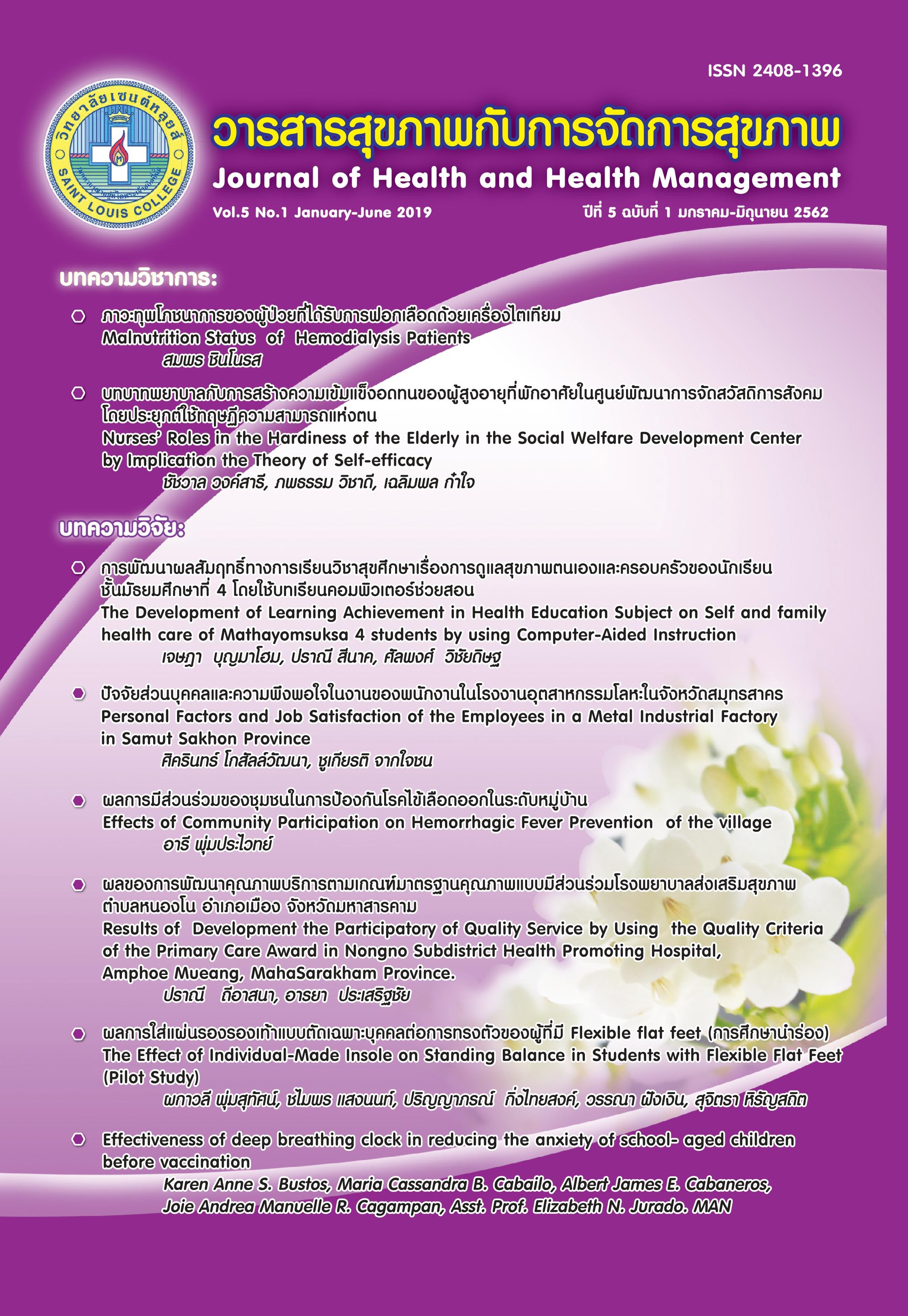Effectiveness of deep breathing clock in reducing the anxiety of school- aged children before vaccination
Keywords:
vaccination, deep breathing clock, Anxiety, school-aged childrenAbstract
This study aimed to determine the effectiveness of deep breathing clock as an interventional tool in reducing the anxiety of school-aged children before vaccination. This study used quasi experimental research design, specifically a pretest and posttest design. The samples were thirty participants composed of school-aged children ranging from 6-12 years of age and selected through purposive sampling. The study was conducted in selected health centers in Manila and in selected clinics. Children’s Perioperative Multidimensional Anxiety Scale (CPMAS) was used for both pre and post assessment. The results found that using the deep breathing clock before vaccination significantly reduced the anxiety of school-aged children at the level of .01. Thus, the deep breathing clock was proven to be an effective interventional tool in decreasing the level of anxiety in school-aged children ranging from 6-12years old before vaccination.
References
Canbulat, N., Inal, S., & Sönmezer, H. (2014). Efficacy of distraction methods on procedural pain and anxiety by applying distraction cards and kaleidoscope in children. Asian Nursing Research, 8(1), 23–28.
Hockenberry, M., & Wilson, D. (2016). Wong’s Nursing Care of Infants and Children 1st edition. Elsevier Inc. Singapore. Pte Ltd.
Polit, D., & Beck, C.T. (2018). Essentials of Nursing Research: Appraising Evidence for Nursing Practice. Philadelphia, United States of America
Wolters Kluwer. Riaz, A., Husain, S., Yousafzai, M.T., Nisar, I., & Shaheen, F., (2018). Reasons for non-vaccination and incomplete vaccinations among children in Pakistan. https// doi.org/10.1016/j.vaccine.2018.07.24
Taddio, A., Ilersich, A., Ipp, M., Kikuta, A., & Shah, V. (2009). Physical Interventions and Injection Techniques for Reducing Injection Pain During Routine Childhood immunizations : Systematic Review of Randomized Controlled Trials and Quasi Randomized Controlled Trials, https://doi.org/10.1016/ j.clinthera.2009.07.024
Taddio, A., Ipp, M., Thivakaran, S., Jamal, A., Parikh, C., Smart, S., … Katz, J. (2012). Survey of the prevalence of immunization non-compliance due to needle fears in children and adults. Vaccine, 30(32), 4807–4812.




